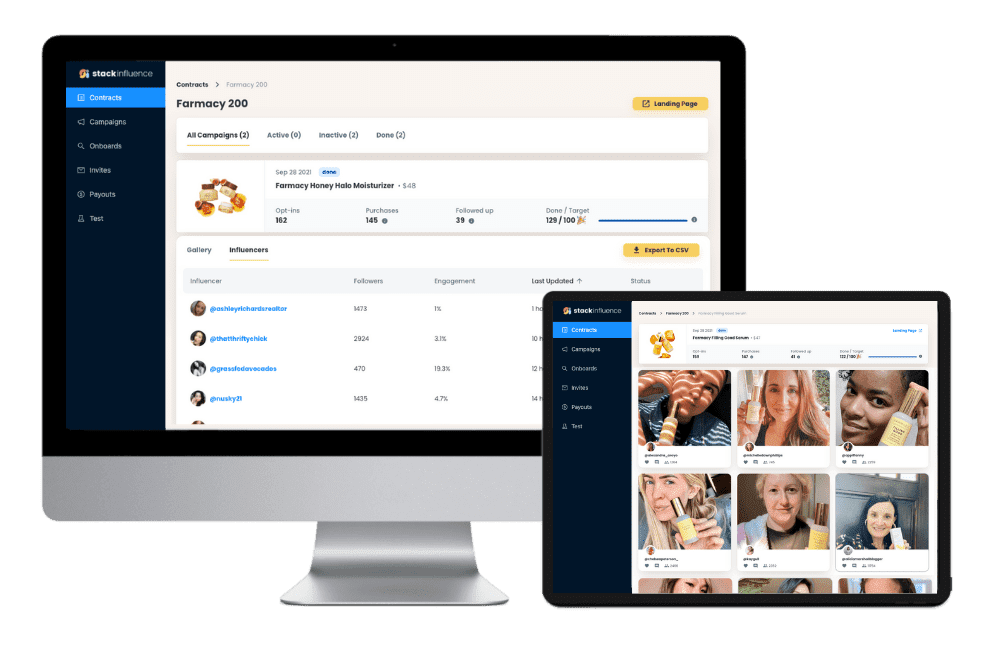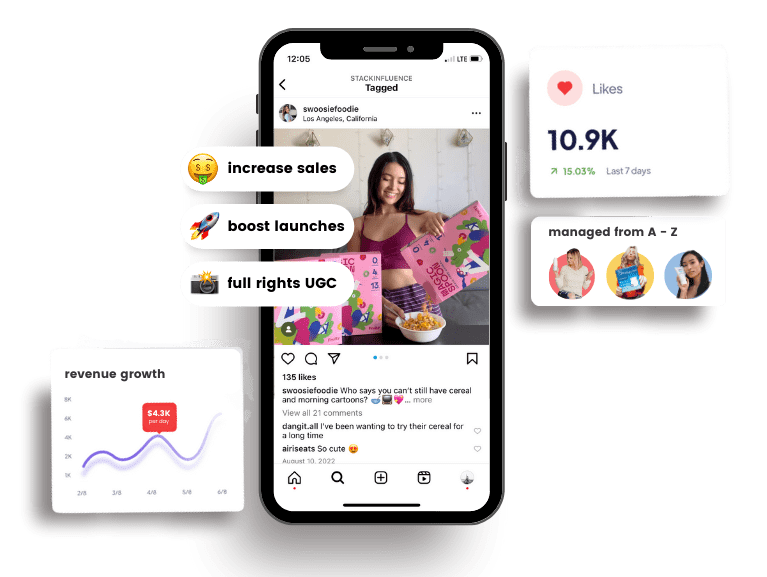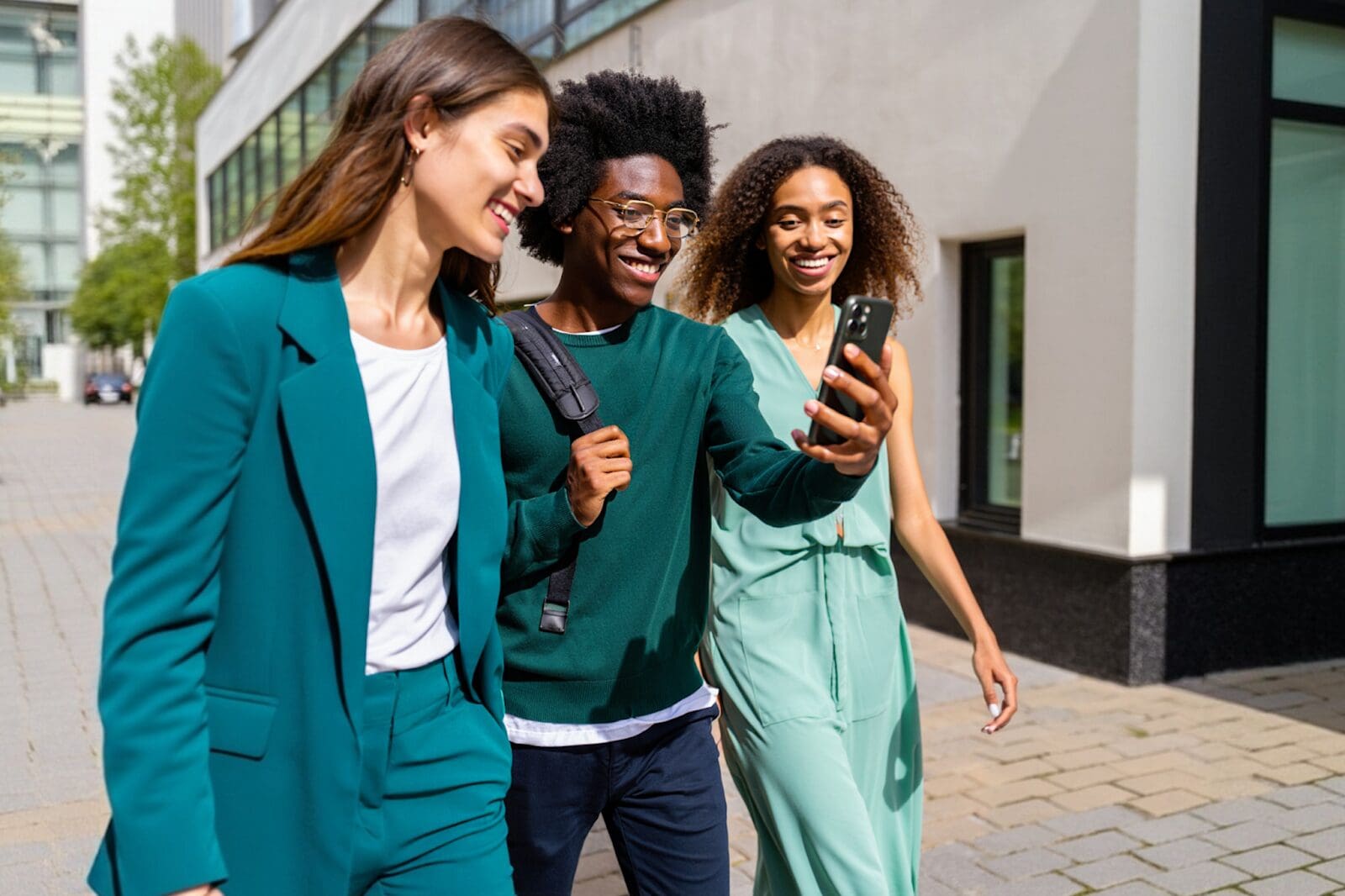Influencer Product Seeding Strategies: 8 Tips to Boost Your Brand
29th
October, 2025
Influencer Marketing
Amazon Marketplace
Artificial Intelligence
TikTok Tips
Influencer product seeding – also known as influencer gifting – is the strategy of sending free products to content creators (usually with no strings attached) in hopes that they’ll share an authentic shoutout or review on social media. It’s a powerful influencer marketing tactic popular on platforms like Instagram and TikTok. For e-commerce brands, including Amazon marketplace sellers and DTC (direct-to-consumer) startups, a well-run seeding program can generate valuable word-of-mouth, user-generated content (UGC), and even increased product reviews and sales. The idea is simple: if creators genuinely love your product, they’ll be excited to post about it – giving your brand organic exposure to their followers.
That said, “send it and forget it” is not a winning approach. You need a strategy to get real results. Below, we’ll cover 8 influencer product seeding strategies that actually work, complete with examples and tips. From leveraging micro-influencer platforms like Stack Influence to crafting memorable unboxing experiences, these tips will help Amazon sellers and DTC brands run effective, scalable seeding campaigns. Let’s dive in!
1. Leverage Micro-Influencer Seeding at Scale

One of the best ways to kickstart an influencer seeding program is to tap into micro-influencers – everyday creators with smaller followings (often 5K–100K) who have highly engaged audiences. In fact, micro-influencers often see 3–8% engagement rates on their posts, far higher than the ~1–2% typical for macro-influencers. Their tight-knit communities trust their recommendations, making micro and even nano influencers a goldmine for authentic marketing. Many brands are realizing that a bunch of “smaller” voices can outperform a single big celebrity when it comes to engagement and conversions.
To maximize this, smart brands use influencer platforms and communities (like Stack Influence) to scale up micro-influencer seeding. Rather than manually recruiting influencers one by one, these platforms connect you with large networks of vetted creators. For example, Stack Influence’s platform links brands to a network of over 11 million micro and nano influencers across all niches – making it feasible to send your product to hundreds of targeted creators at once. This kind of reach would be impossible to manage alone, but with an automated platform you can distribute samples en masse and still hit the right audience for your niche.
Why go to so many micro-influencers? Because the ROI can be tremendous. Micro-influencer campaigns often deliver higher returns for each dollar spent. It’s common to see 5×–8× ROI with micro influencers, whereas macro-influencer partnerships average more like 3×–5× ROI. In one real campaign, a DTC e-commerce brand used 211 micro-influencers in a seeding program and drove $129,000+ in Amazon sales – a staggering 13:1 ROI (every $1 invested returned $13 in revenue). The brand’s product was showcased to many small, engaged audiences and the collective impact was huge. In contrast, paying the same budget to one or two big influencers might not have come close to that result. This example shows how Amazon sellers can even boost their product rankings and sales by flooding their niche with lots of micro-influencer content. In fact, some Amazon marketplace sellers have collaborated with 100+ micro influencers at once to ramp up product reviews and visibility.
Key Takeaway: Consider using a micro-influencer platform (such as Stack Influence) to automate and scale your seeding campaigns. By sending products to a large pool of relevant micro-influencers, you’ll generate authentic buzz and UGC at scale. The high engagement and trust that micro creators enjoy often translate into higher conversion rates and ROI for your brand. Plus, you’ll quickly gather a library of grassroots content – real customer-like posts – that you can later repurpose in ads or on your own social channels.
2. Personalize Your Product Packages for a Memorable Unboxing
Once you’ve lined up the right influencers, make sure your product shipment stands out. Anything you can do to create a memorable unboxing experience is a plus. Remember, influencers (especially popular ones) might receive dozens of packages from brands. If yours feels impersonal or “cookie-cutter,” it may not leave a lasting impression. The goal is to delight the creator when they open your package, increasing the chances they’ll share that excitement with their followers.
How to personalize? Get creative and thoughtful with your packaging and its contents:
-
- Include a personal note: A sincere, handwritten thank-you note to the influencer can go a long way in showing authenticity. It humanizes your brand and makes the creator feel valued.
- Tailor the product selection: If you have multiple product variants, send something you know that influencer will love. For example, a fitness nutrition brand might seed a new chocolate protein powder to a creator known for her love of chocolatey snacks. Showing you’ve paid attention to the influencer’s interests or style makes the gift feel truly thoughtful.
- Customize the items or packaging: Little personal touches can deliver a big “wow” factor. Some brands print or engrave an influencer’s name on the product or box. For instance, a clothing boutique could embroider the influencer’s name on a jacket or include custom packaging in the influencer’s favorite color. These details make the unboxing Instagram-worthy and shareable.
- Include a personal note: A sincere, handwritten thank-you note to the influencer can go a long way in showing authenticity. It humanizes your brand and makes the creator feel valued.
Also, ensure your package is aesthetically pleasing and on-brand – many influencers love posting unboxing videos or Stories, so a beautiful presentation increases the chance of being featured. By personalizing each kit, you signal that this isn’t just mass product spam; it’s a gift curated just for them. Influencers are then more inclined to reciprocate the goodwill with an appreciative post.
Finally, don’t forget practical details: provide instructions if needed (e.g. how to use the product), and make sure the package is well-protected for shipping. A damaged item or a leaking bottle can ruin the moment. With a bit of planning, your seeded products can deliver a delightful surprise that influencers can’t wait to share with their followers.

Unlock the Power of Micro Influencers and Elevate your Brand Today!

3. Target Influencers Who Truly Fit Your Brand (Quality Over Quantity)
It might sound obvious, but a common mistake in product seeding is treating it like a pure numbers game – blasting freebies to as many influencers as possible without careful targeting. Relevance matters. You’ll get much better results by sending products to influencers who are a natural fit for your brand and who will actually use (and enjoy) what you send. In a nutshell, the influencers you seed should mirror your target customer and align with your niche.
When selecting creators for your seeding list, look for those who check these boxes:
-
- Matches your target demographic & niche: Their audience should broadly match your ideal customers in interests, age group, lifestyle, etc. For example, if you sell vegan snacks, prioritize vegan food bloggers or fitness influencers who talk about plant-based diets. (In fact, the vegan brand MyVegan primarily partners with vegan fitness creators, which is a perfect alignment.)
- Already posts similar content: The creator’s feed shows they genuinely use and enjoy products like yours. Maybe they frequently share makeup looks (great if you’re a beauty brand), or they’re a tech gadget reviewer (ideal if you sell electronics). An influencer who already loves the product category will be more inclined to feature your item naturally.
- Authentic engagement & credibility: Check that they have a real, engaged following (not spammy or inflated with fake followers). Look at their comments and how they interact. A smaller creator with an enthusiastic, interactive audience is far more valuable than a bigger one with silent or bot-filled followers. Micro-influencers often shine here – they have trust and rapport with their followers, which gives their recommendations weight.
- Matches your target demographic & niche: Their audience should broadly match your ideal customers in interests, age group, lifestyle, etc. For example, if you sell vegan snacks, prioritize vegan food bloggers or fitness influencers who talk about plant-based diets. (In fact, the vegan brand MyVegan primarily partners with vegan fitness creators, which is a perfect alignment.)
It also pays to do a bit of homework: if possible, identify influencers who have expressed interest in products like yours or who follow your brand already. Some of the best seeding targets are existing fans or customers of your brand – they’re likely to be thrilled to receive your product unexpectedly.
Data doesn’t lie: One recent study found that when brands matched influencer niche to the product niche, they saw a 13.6% boost in engagement on those posts. In contrast, many brands miss this opportunity – only about 37% of brands consistently choose influencers in the same niche as their product. This is a huge gap you can exploit by being selective and strategic with your seeding list. In short, quality beats quantity. Ten well-chosen micro-influencers who truly love your product will outperform 100 random ones who don’t care about it.
Finally, don’t be afraid to be “picky” about who gets your free product. Your seeding budget (and inventory) is finite, so treat it as an investment – send products where they have the highest chance of converting into great content and goodwill for your brand. It’s perfectly fine to politely decline ill-fitting influencers who ask for freebies, and instead focus on those who align with your brand values and audience.
4. Send Your Best Products – Don’t Skimp on the “Wow” Factor
When running a seeding campaign, it’s tempting to send cheaper items or samples to minimize cost. However, remember why you’re doing this: you want influencers to be excited about your product and motivated to share it. If the freebie is underwhelming, it may end up forgotten in a drawer – or posted without enthusiasm. On the other hand, a generous, high-value gift can grab an influencer’s attention and make them want to showcase it.
In practice, this means prioritize your hero products or new, exciting releases for seeding (even if they cost more), rather than offloading clearance stock that isn’t as appealing. For example, some brands go big: skincare companies might send full-size luxury serums instead of tiny sachet samples. Or consider the approach of Joovv, a wellness tech brand – they gifted influencers a high-end red light therapy mask retailing for ~$600 as part of their seeding efforts. That’s obviously a pricey item, but it certainly got creators talking! The point is not that you must spend $600 on every seeding kit, but that you shouldn’t cut corners on value if you expect creators to invest their time and creative energy in featuring your product.
If your brand’s catalog mostly consists of low-cost items, you can still impress by bundling multiple products into a nice gift set. A curated package with a variety of goodies can feel bountiful and exciting, even if each item is inexpensive. For instance, rather than mailing a single $5 item, send a themed bundle of 5–6 items in a gift box. Receiving a big package with “lots of stuff” has an inherent thrill factor (picture an influencer unboxing a whole haul on camera). As one example, the household cleaning brand The Pink Stuff often seeds influencers with entire sets of their cleaners and pastes, which makes for a more substantial and photographable gift. The influencer can test a range of your products, and you increase the odds that at least one or two really resonate with them.
A final note: include anything that can add value or context to the product. If you’re sending a gadget, throw in a carrying case or an accessory. If it’s a food item, maybe include a recipe card. These extras show thoughtfulness and help the influencer experience the product in the best possible way.
In summary, don’t be stingy with your seeding campaign. Think of it as investing in marketing: the cost of giving away a higher-value product pales in comparison to the potential exposure and credibility you gain from an authentic influencer post. Give them something worth raving about, and they just might do exactly that.
5. Diversify Your Influencer Selection (and Embrace Micro Creators)
While you want each influencer to fit your brand, that doesn’t mean they all need to look the same or come from one niche. In fact, a savvy strategy is to seed across a diverse range of influencer types – as long as each segment aligns with your product in some way. By doing so, you can reach different audiences and learn which communities respond best. You might be surprised; sometimes an unexpected niche ends up loving your product the most!
For example, say you sell a plant-based protein cookie. Your obvious targets might be fitness influencers and vegan food bloggers. But you could also send samples to “mommy bloggers” who focus on healthy family snacks, or to lifestyle creators who do lunchbox ideas for kids. This is exactly what the brand Woah Dough did – they sent their plant-based cookie dough to both mom influencers and foodie influencers, effectively reaching two distinct audiences with the same campaign. Both groups appreciated the product (for different reasons), expanding Woah Dough’s exposure. The takeaway: brainstorm all the adjacent niches that might be interested in your product, not just the core obvious niche.
Another reason to diversify is to leverage the power of micro-influencers and nano-influencers, as discussed earlier. Don’t just chase one or two big names and call it a day. In our experience, micro-influencers often produce better content and higher engagement than creators with bigger accounts. Their audiences are more tuned-in, and the creators themselves often put extra effort into content creation (since they’re building their own personal brand). By involving many smaller influencers, you also get a volume of unique content pieces – which can fill your social proof bucket nicely.
However, managing a broad seeding initiative (with lots of influencers) can become time-consuming if done manually. Keeping track of 50 or 100 influencer conversations, addresses, shipments, etc., is a challenge for any small team. This is where using a platform or an agency (as mentioned in Strategy #1) really helps, because they can automate the logistics and let you scale up without losing your mind in spreadsheets. If you’re doing it in-house, you might start smaller and build up gradually as you develop processes for outreach and follow-up.
Overall, don’t limit yourself to one “type” of influencer. As long as each creator you choose is genuinely relevant to your brand in some way, having variety in your seeding roster will amplify your campaign’s reach. Different voices will speak to different potential customers. Plus, you’ll gather insights – maybe you’ll discover that micro fashion influencers, for instance, generate more buzz for your beauty product than pure beauty gurus do. Those learnings can inform your future influencer marketing plans beyond seeding.
6. Communicate & Build Relationships Throughout the Process

One often-overlooked aspect of influencer product seeding is communication. Many brands treat seeding as a one-way transaction: send product -> hope for the best. But by proactively engaging with influencers before and after they receive your product, you can significantly improve your success rate and lay the groundwork for longer-term partnerships.
Before the product arrives: It’s a great idea to reach out to the influencer once you’ve shipped the package, giving them a heads-up that something special is on the way. This can be a quick, friendly email or DM saying, “Hey {Name}! Just wanted to let you know we popped a package in the mail for you – keep an eye out for it early next week. Can’t wait for you to try our product!” This small gesture builds anticipation and shows professionalism. It also ensures they won’t be caught off guard by a delivery (and if you have tracking info, you might share the tracking number too). Brands that take this step often find influencers more appreciative and responsive. It’s a simple courtesy that says “we care that you get this gift.” And on a practical note, if there’s any shipping issue or delay, you’ve opened a line of communication to sort it out.
After the product is delivered: Follow up with a thank-you and an invitation for feedback. For instance, a few days after delivery, you might message them, “Hope the package arrived safely! We’d love to hear what you think of the {product}. Let us know if you have any questions or need anything at all.” This isn’t a direct ask for a post (remember, seeding is no-strings-attached), but it encourages the influencer to share their experience or even post about it if inclined. It keeps the dialogue open. Sometimes, this nudge is all it takes for an influencer who loved the gift to say, “Yes! I’m planning to post a story about it tomorrow.”
If an influencer ends up creating content featuring your product, don’t ghost them – engage! Which brings us to relationship-building: once posts start going live, show love on those posts from your brand’s account. Like the post, leave a genuine comment, and answer any questions their followers ask in the comments. This not only strengthens your connection with the influencer (they see that you value their content), but it also makes your brand more visible to their audience. For example, a beauty brand named Pallure made a point to comment with a personal thank-you on an influencer’s Instagram post about their product, sparking positive vibes all around. Many micro-influencers truly appreciate when brands acknowledge them publicly – it’s a form of recognition for their hard work.
In summary, treat influencers like the partners and brand advocates that they are. Good communication can turn a one-time seeding interaction into a long-term relationship. Even if an influencer doesn’t post immediately, the friendly follow-ups and engagement can keep them in your orbit for future campaigns or collaborations. The bottom line: be human, responsive, and appreciative – it will set you apart from other brands and build goodwill that money can’t buy.
7. Engage with Their Content and Amplify It (With Permission)
Congrats – some of your seeded influencers have posted about your product! Now, squeeze all the value you can from that content. Don’t just silently rejoice; engage and amplify those posts to extend their reach and lifespan.
First, as mentioned, start by engaging directly on the influencer’s post (liking, commenting, sharing to your Stories if it’s on Instagram, etc.). Show the love publicly. A quick “We’re so happy you enjoyed it! 😊 Thanks for sharing!” in the comments can delight the creator and shows other viewers that you have an active, friendly brand. This kind of interaction can encourage more UGC – other micro-creators see that you interact with influencers, which might motivate them to post about you too in hopes of a brand shoutout.
Second, consider repurposing the best influencer posts on your own channels – but always ask permission first if it wasn’t contractually agreed. Most creators are happy to let brands repost their content if you ask and credit them. Whether it’s resharing an Instagram Story, re-posting a great photo on your feed, or featuring a TikTok video on your website, this UGC can be marketing gold. It provides social proof to your audience (“look, real people love our product!”) and also gives the influencer additional exposure. For example, eyewear brand Moody Lenses often reposts influencer content to their Instagram Story, effectively saying “check out how great our product looks!” while giving the influencer a shoutout. It’s a win-win.
You can even go beyond organic sharing. If you obtain explicit usage rights, you might incorporate the influencer’s content into ads, emails, or product pages. Imagine running a Facebook Ad using a real TikTok review from an influencer – it can feel more genuine than a polished brand commercial. Some brands have taken top-performing seeding content and turned them into paid social ads (e.g. whitelisting or Spark ads) to reach a broader audience. Just be mindful: you need permission for any content reuse beyond a simple reshare. If your initial outreach or platform agreement didn’t cover content rights, shoot a message like, “We LOVE your video – it came out amazing! Would you be okay with us reposting it on our social media (with credit to you)?” Most will say yes. For paid usage (like in ads), you might offer a small additional incentive or sign a brief agreement.
Lastly, don’t forget to say thank you! A genuine thank-you note or message to the influencer for posting will end things on a positive note and increases the likelihood they’ll want to work with you again. If certain influencers really knocked it out of the park, you might even consider sending a follow-up gift or exclusive discount as appreciation.
By engaging with and amplifying influencer content, you maximize the impact of each post that comes out of your seeding campaign. One piece of content can be echoed across multiple channels, multiplying the eyeballs on it. Plus, this strategy reinforces to your audience that real people are loving your products – building trust and credibility for your brand.
8. Track the Results and Learn for Next Time
As with any marketing effort, you must measure the results of your influencer seeding campaign. The goal is to understand what worked, what didn’t, and how it impacted your business, so you can refine your strategy going forward. Here are some key metrics and questions to evaluate:
-
- Social reach and engagement: How many posts, Stories, or mentions did you get as a result of the seeding? Collect the links or screenshots. Measure the likes, comments, shares, and views on those posts. This tells you the immediate social media impact. (Did one influencer’s post go viral? Which creators drove the most engagement?)
- User-Generated Content quantity: How much UGC did you actually earn from the campaign (photos, videos, reviews)? Count up the pieces of content. This content is a tangible asset – the more you have, the more you can potentially repurpose in marketing.
- Follower growth or traffic spikes: Did your brand’s social accounts see a bump in followers during the campaign period? Did web traffic or Amazon page visits increase when the posts were going live? Track referral traffic if possible, or use unique discount codes to attribute sales.
- Engagement rate of influencers: Calculate roughly what percentage of your seeded influencers ended up posting. Don’t expect 100% – remember, seeding has no posting obligation. In fact, based on industry data, a typical post rate is around 20–30% for seeding campaigns (depending on how targeted and engaged your influencers are). For example, if you sent out 50 kits and 15 influencers posted, that’s a 30% post rate, which is solid. If your post rate is much lower, it may indicate your targeting or product fit was off, or your follow-up engagement could be improved.
- Business outcomes: This is the big one – did the seeding campaign help drive your goals? Look at any sales uptick, conversions, or reviews that coincided with the campaign. For Amazon sellers, track if your product’s rank or number of reviews increased. For DTC brands, check if you saw a lift in referrals or use a unique promo code given to influencers’ audiences to tally direct sales. Also, consider feedback – what did influencers say about the product in private messages or in their posts? Any constructive critiques or common praises? This qualitative feedback is gold for improving your product or marketing.
- Social reach and engagement: How many posts, Stories, or mentions did you get as a result of the seeding? Collect the links or screenshots. Measure the likes, comments, shares, and views on those posts. This tells you the immediate social media impact. (Did one influencer’s post go viral? Which creators drove the most engagement?)
Make sure to compile all these results in a report or spreadsheet. It might take some elbow grease (unless you’re using an influencer platform that aggregates the metrics for you), but it’s worth it. By analyzing the data, you might discover, for instance, that Instagram yielded more content than TikTok, or that nano-influencers drove higher engagement but micro-influencers drove more sales. These insights will help you optimize future campaigns – maybe next time you’ll send out more products, or focus on a different tier of creator, or refine your messaging.
Set clear goals upfront and compare against them. If your goal was to generate 100k impressions and you got 250k – fantastic! If you fell short, examine why: perhaps you need to seed more people or improve how you entice creators to post.
Lastly, don’t be discouraged by less-than-stellar results from some influencers. Product seeding can be a bit of a numbers game and learning process. The beauty is that even when a particular influencer doesn’t post, you’ve still given someone a positive experience with your brand (which may pay off later in word-of-mouth). And the ones who do post can have outsized impact. Over time, you’ll get better at predicting which influencers are home runs for your brand.
In summary: track everything and learn from it. Influencer seeding is both an art and a science – by measuring outcomes, you continuously turn more of it into science. Then double down on what works (and politely cut what doesn’t). Each campaign sets the stage for a more effective next campaign.

Unlock the Power of Micro Influencers and Elevate your Brand Today!

Conclusion to Influencer Product Seeding Strategies
Influencer product seeding, when done right, is a cost-effective, scalable way to build buzz for your brand and gather tons of authentic content. It’s an especially powerful approach for micro-influencer marketing, where genuine enthusiasm trumps flashy paid endorsements. By personalizing your outreach, targeting the right creators, providing real value in your gifts, and engaging sincerely, you can turn a simple free product into a cascade of brand awareness, UGC, and even sales. This strategy is ideal for Amazon sellers looking to ramp up reviews and search rankings, and for DTC e-commerce brands aiming to foster a community of brand advocates.
Remember, at its core product seeding is about building relationships. When you treat influencers as trusted partners and wow them with your product, you plant the “seeds” for organic growth. Some of those seeds will sprout into amazing social media moments and loyal brand fans. So, take these strategies and start seeding your way to a thriving garden of influencer-driven success!
Happy seeding and may your influencer marketing efforts yield plentiful fruit (and posts)! 🌱🤳

By William Gasner
CMO at Stack Influence
William Gasner is the CMO of Stack Influence, he's a 6X founder, a 7-Figure eCommerce seller, and has been featured in leading publications like Forbes, Business Insider, and Wired for his thoughts on the influencer marketing and eCommerce industries.
Want new articles before they get published? Subscribe to our Awesome Newsletter.
stack up your influence
turning creativity into currency
our headquarters
111 NE 1st St, Miami, FL 33132
our contact info
[email protected]
stack up your influence
turning creativity into currency
our headquarters
111 NE 1st St, 8th Floor
Miami, FL 33132


